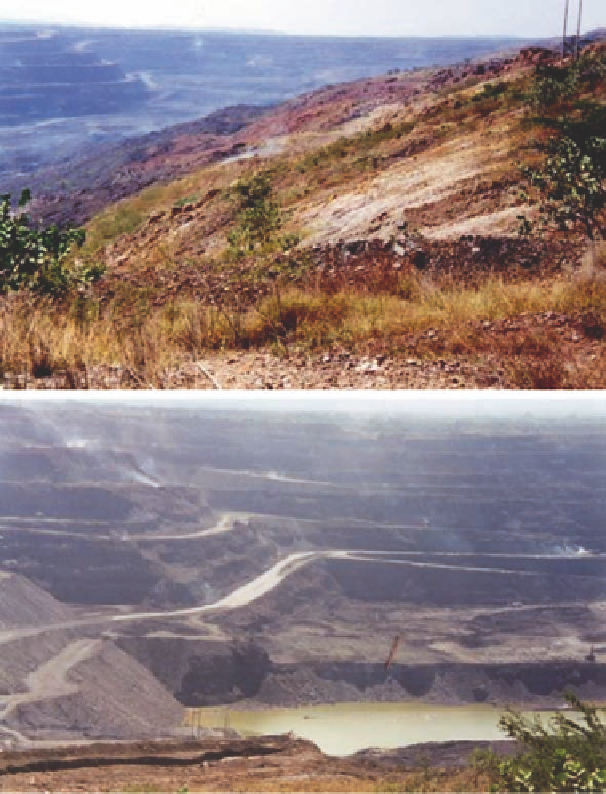Geology Reference
In-Depth Information
A
Smouldering coal fires on benches of open cast mine
Edge of open pit failure
Burning (hot spot)
Large scale failure of open cast
slopes and benches
Burnt shale (residual ash)
B
Steam and gases from coal fires on benches of open pit
Figure 5.1.9. (A) Large-scale landslide on the flank of the El Cerrejón Zona Norte opencast mine in Colombia.
Smoldering-insitu coal fires are indicated by the emissions of carbon monoxide rich smoke rising from the
slipped mass and on the walls in the mine. The red-shale residue is visible on the main body of the landslide in
the center of the photograph. (B) Gas and steam emanating from vents on the benches of the open pit. Photo by
Donnelly 2000.
was compacted into layers about 450 mm thick and then covered with shale. Ground investigation boreholes were
drilled about 12 months later and these revealed that the hot spots had not undergone any significant cooling. So,
they were extinguished by injecting a pulverized fuel ash curtain around the hot spots. Subsequently the sites were
restored (Figure 5.1.12).
Shirebrook Colliery Spoil Tip in Shirebrook, Nottinghamshire Coalfield, England
The former Shirebrook Colliery spoil tip, also known as the
is located southeast of the town of
Shirebrook, in north Nottinghamshire, in the English East Midlands. The tip consists of two distinct areas. The
northern zone contains dark gray granular spoil covered with vegetation. The southern area is comprised largely of
red shale with little vegetation.
“
Red Shale Tip
”
A site investigation was carried out from 1999 to 2001 to characterize the colliery spoil and assess its composition.
Ground temperatures were monitored via a network of boreholes that recorded maximum temperatures of around
300 °C at 5m below the surface. These temperatures were associated with steep thermal gradients in contrast to
background temperatures that were in the range of 10
30 °C. The thermal conductivity of the colliery spoil was
considered to be low and therefore these high ground temperatures were envisaged to be associated with
combustion, probably taking place in the vicinity of the boreholes. Alternatively, these high temperatures could
-































